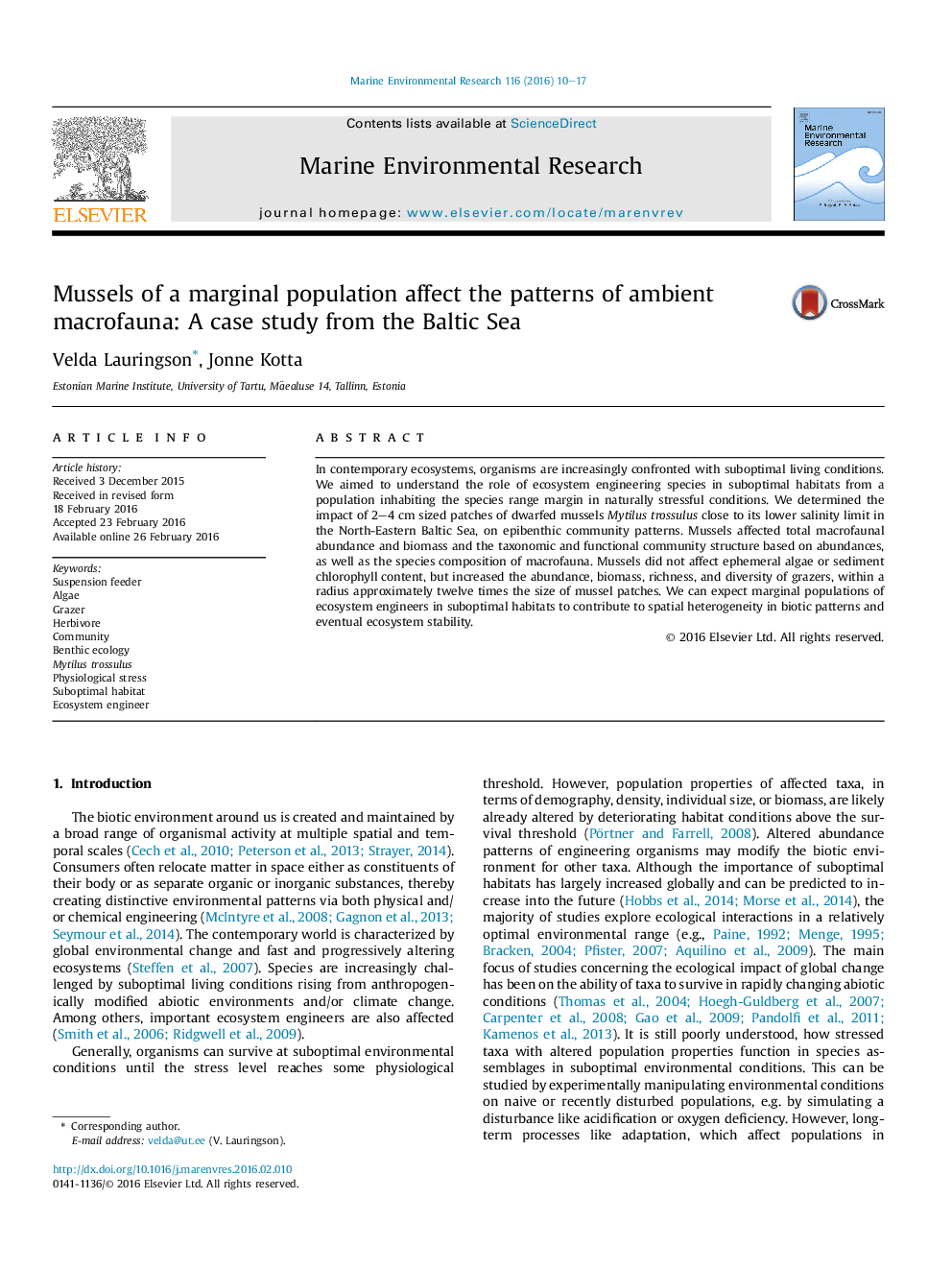| Article ID | Journal | Published Year | Pages | File Type |
|---|---|---|---|---|
| 4550599 | Marine Environmental Research | 2016 | 8 Pages |
•Abundance and biomass of ambient epibenthic macrofauna increased around mussels.•Community structure and taxonomic composition of macrofauna were changed.•Abundance, biomass, taxonomic richness and diversity of grazers increased.•The standing crop of ephemeral algae and sediment chlorophyll remained unaffected.
In contemporary ecosystems, organisms are increasingly confronted with suboptimal living conditions. We aimed to understand the role of ecosystem engineering species in suboptimal habitats from a population inhabiting the species range margin in naturally stressful conditions. We determined the impact of 2–4 cm sized patches of dwarfed mussels Mytilus trossulus close to its lower salinity limit in the North-Eastern Baltic Sea, on epibenthic community patterns. Mussels affected total macrofaunal abundance and biomass and the taxonomic and functional community structure based on abundances, as well as the species composition of macrofauna. Mussels did not affect ephemeral algae or sediment chlorophyll content, but increased the abundance, biomass, richness, and diversity of grazers, within a radius approximately twelve times the size of mussel patches. We can expect marginal populations of ecosystem engineers in suboptimal habitats to contribute to spatial heterogeneity in biotic patterns and eventual ecosystem stability.
